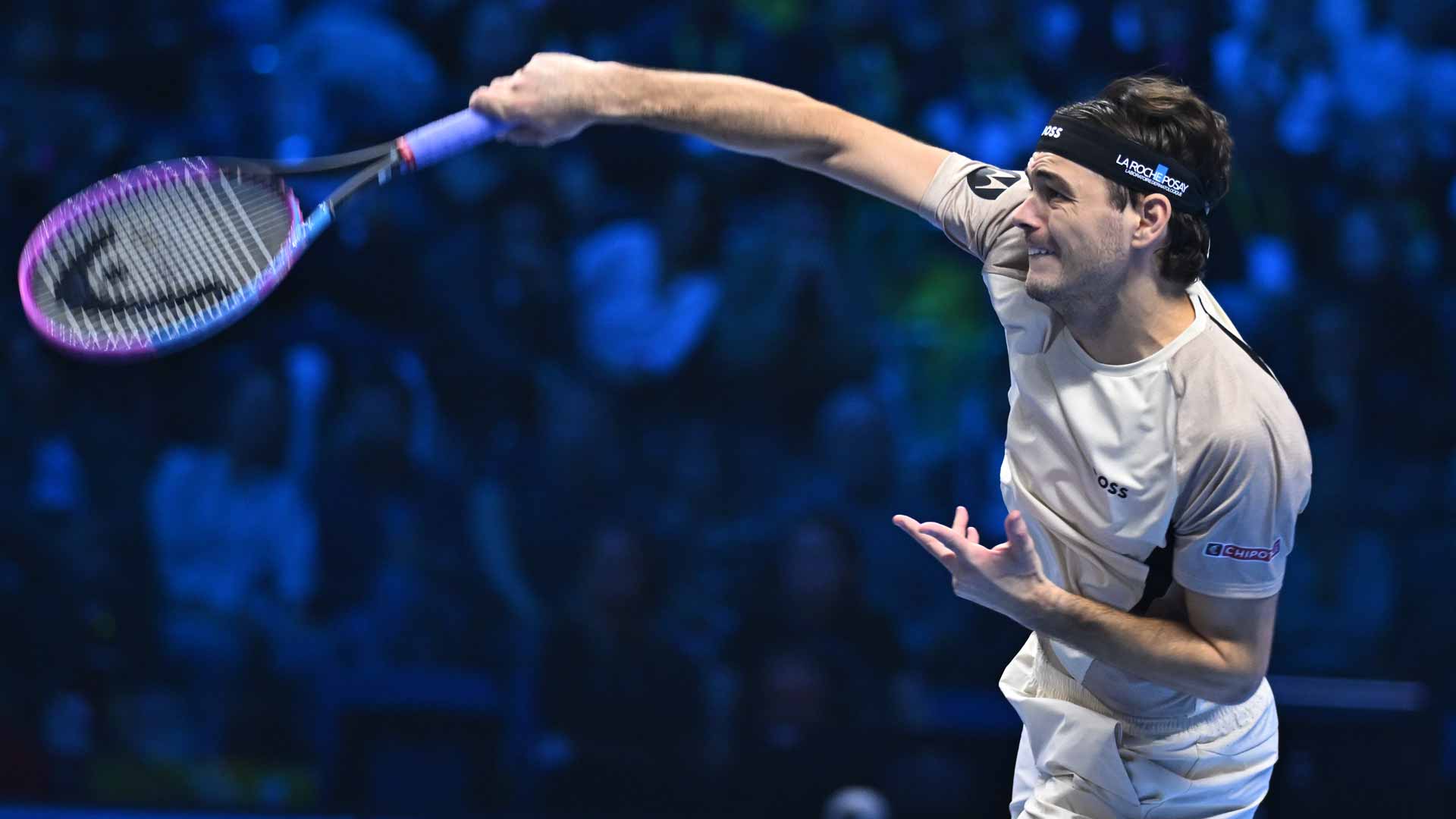Fritz turns Turin's defeat into offseason fuel
Taylor Fritz departs the Nitto ATP Finals grappling with a season of interrupted momentum, but his focus on knee rehab and tactical evolution signals a determined push toward 2026 breakthroughs.

The Pala Alpitour's lights dim on Taylor Fritz's 2025 campaign, a year that echoed last season's promise yet faltered in the round-robin grind of the Nitto ATP Finals. The 28-year-old American, a finalist here in 2024, absorbed a straight-sets loss to Alex de Minaur on Thursday, closing out a 53-23 record that matches his 2024 mark. Amid the quiet aftermath, Fritz shifts toward rest and renewal, his voice steady with intent as he contemplates the path ahead.
Knee rehab anchors recovery drive
Fritz's offseason begins with a singular priority: mending knee tendinitis that dogged his schedule and curtailed aggressive training. He describes the injury's ripple effects, how it confined him to maintenance rather than the intense sessions needed to sharpen his game. This enforced caution, he notes, amplified a deeper frustration in downtime that felt more like limbo than leverage.
“One of my biggest issues this year was anytime that I wasn't playing tournaments or matches, I wasn't actually able to really work on the things I felt like I needed to work on to get better and train hard,” Fritz said. “I felt like I was just trying to maintain and take time off, feel like I could be healthy, fresh, ready to play tournaments. I didn't really get to go as hard as I would have liked to in my time off.”
His plan hinges on consistent rehab paired with a brief tennis hiatus, aiming for tangible progress before rebuilding intensity. Those grass-court titles in Stuttgart and Eastbourne—pushing his career total to 10—highlighted his serving prowess on faster surfaces, where inside-out forehands sliced through defenses. Yet the knee's persistence limited cross-surface adaptations, leaving patterns like his one–two punch underdeveloped on slower bounces.
With time now on his side, Fritz envisions structured blocks to refine underspin backhands for clay transitions and down-the-line returns against hard-court pace. This phase promises not just physical healing but a mental reset, breaking the cycle of reactive play that marked his year. He adds a layer of optimism, seeing the pause as preparation for a more resilient 2026.
“The plan is to just stay on top of the rehab, and hopefully with the rehab and not playing a tonne of tennis for a couple weeks will show some improvements and I can get it better,” Fritz said. “Then, I still have time to train and be ready for the next season.”
De Minaur's pressure reveals serve cracks
In the Jimmy Connors group, Fritz's 1-2 finish pivoted on that clash with de Minaur, tilting their ATP Head2Head to 5-6 against him. The Australian's movement turned the indoor hardcourt into a pressure cooker, his flat, low returns skimming crosscourt to disrupt Fritz's baseline rhythm. Fritz captured just 66 percent of first-serve points, a stark contrast to de Minaur's 83 percent return success, as anticipation guessed placements with blurring footwork.
De Minaur rarely played defensive, opting instead for offensive probes that jammed forehand attacks and forced hesitant inside-in replies. Fritz recalls watching the Australian rally safer against others, yet here the approach stayed aggressive, low trajectories daring risks that his own forehand couldn't always convert. The crowd's tension built with each exchange, de Minaur's steps echoing like a metronome against Fritz's heavier tempo.
This matchup, their first of 2025, underscored how surface and style intersect under Finals scrutiny—the true bounce favoring flat hitting over Fritz's preferred power arcs. He credits the execution, from crushed returns that landed deep before serves settled to side-picking that neutralized wide slices. Dissecting it now, Fritz eyes serve variations, like mixing body serves with out-wide underspin, to reclaim control in future duels.
“He's never been my favorite person to play because I think, one, he moves so well, but [also], he doesn't play very defensive against me,” Fritz said. “I watch him play other matches, sometimes I feel like he is willing to rally, play a bit safer. I feel like he plays very offensive against me. His ball stays very flat and low. It can sometimes be tough to attack off that ball if I'm not feeling great with my forehand.”
“He was picking sides, guessing sometimes on my serve,” Fritz continued. “It made it tough sometimes to serve because I'd hit serves that I'm used to never coming back, and he's already taken three steps in that direction when I toss the ball. He just crushes the return back at me. He did a lot of good things.”
American crown sharpens future edge
Barring an upset from Ben Shelton over defending champion Jannik Sinner on Friday, Fritz clinches American No. 1 for the fifth straight year, a run unbroken since John Isner held it in 2020. This honor, while validating his consistency, stirs a deeper appetite for breakthroughs beyond national lines. The weight of representation has threaded through his season, from grass peaks to injury pulls, fueling a resolve to elevate beyond maintenance.
Fritz's reflections in Turin weave physical limits with psychological layers, the Pala Alpitour's atmosphere amplifying each unforced pivot. He hungers for offseason freedom to drill tactical shifts, like enhancing crosscourt depth to counter low balls or building endurance for prolonged rallies. As Shelton and others rise, this leadership role becomes a forge, tempering his game against rising depth.
The season's close, marked by de Minaur's precision and knee's quiet ache, now propels Fritz toward unburdened preparation. In the offseason's hush, he rebuilds not merely to endure but to dominate, his 2026 horizon bright with the promise of reclaimed intensity and sharper edges on every surface.


